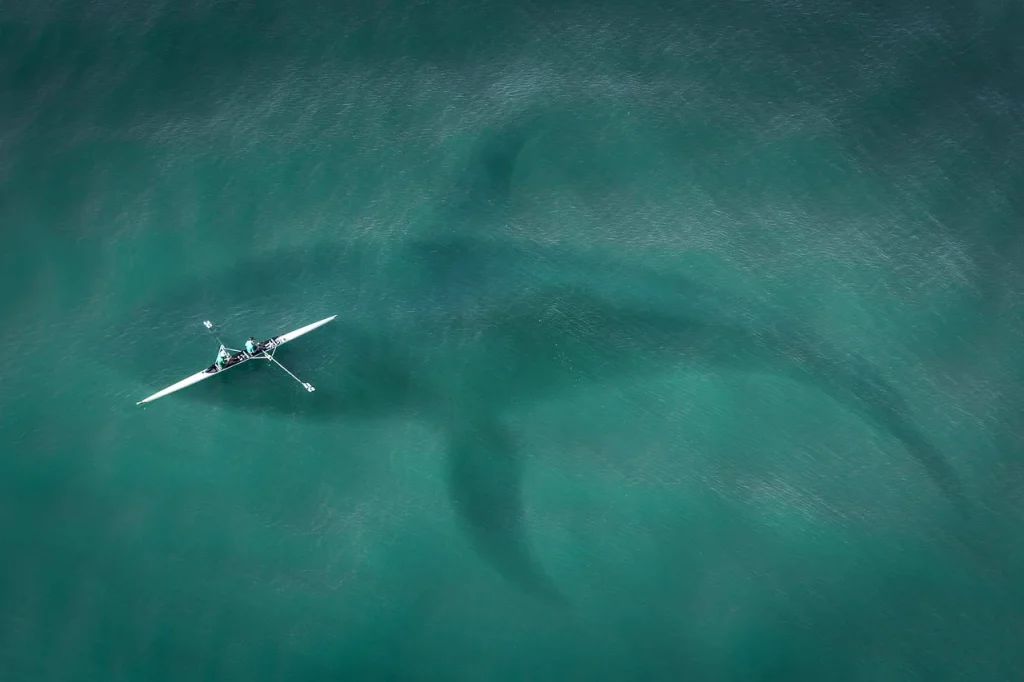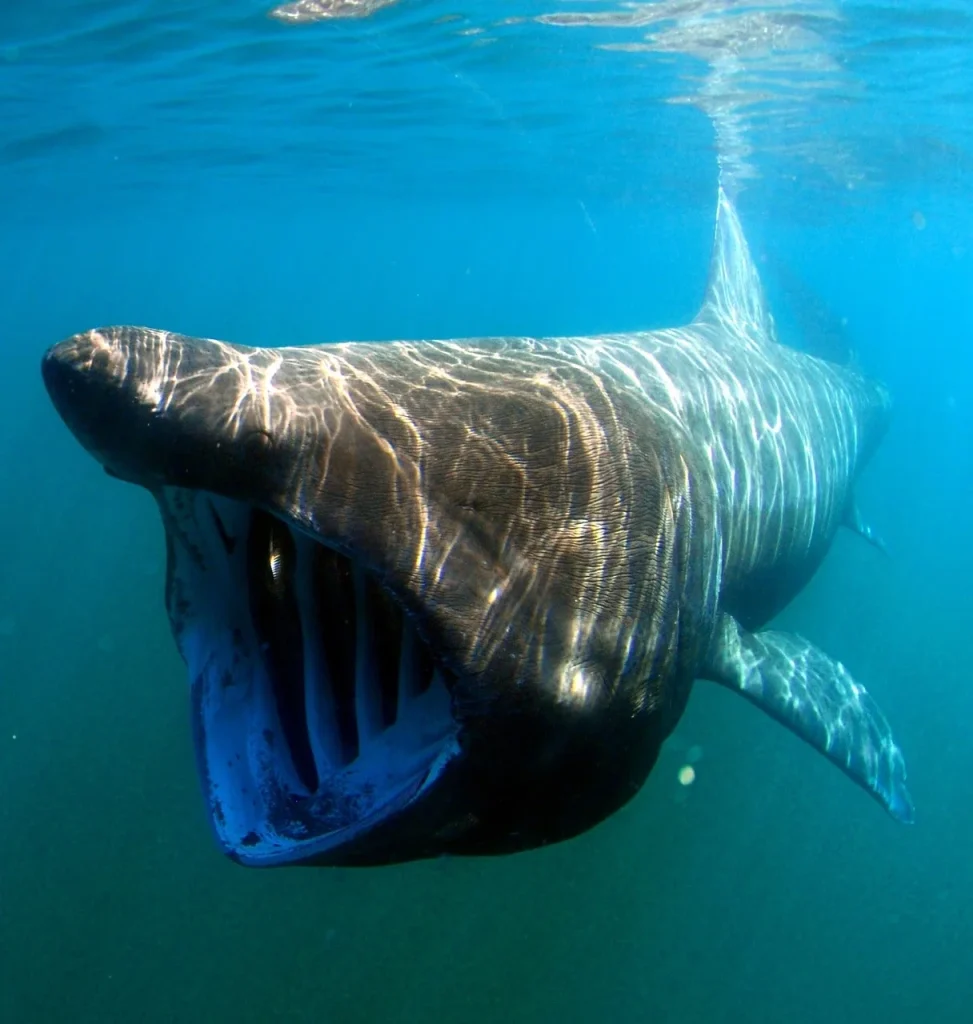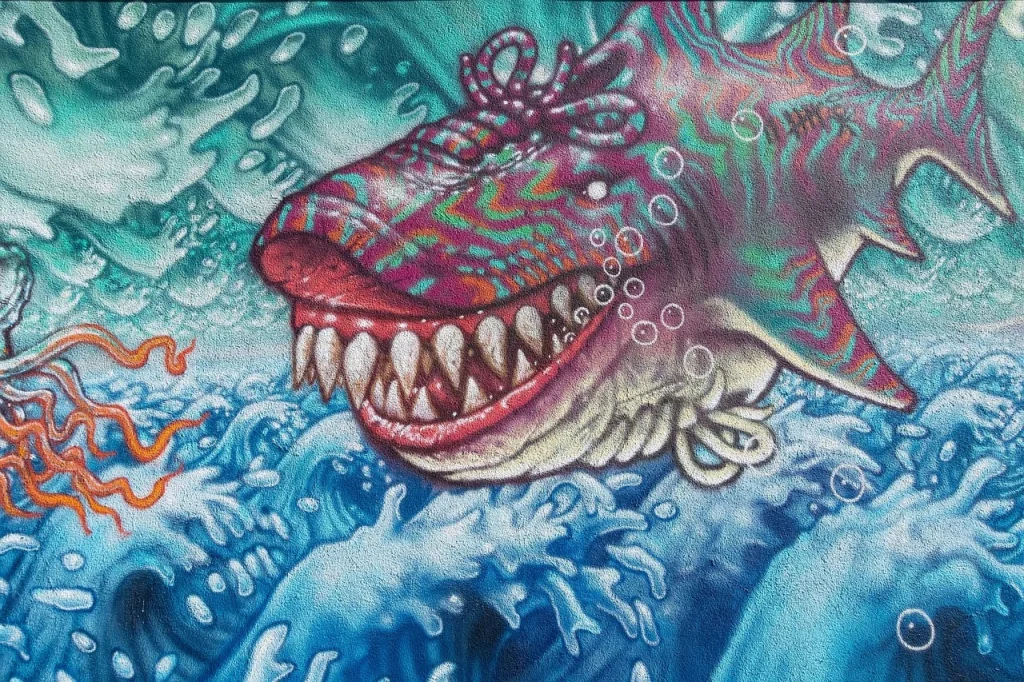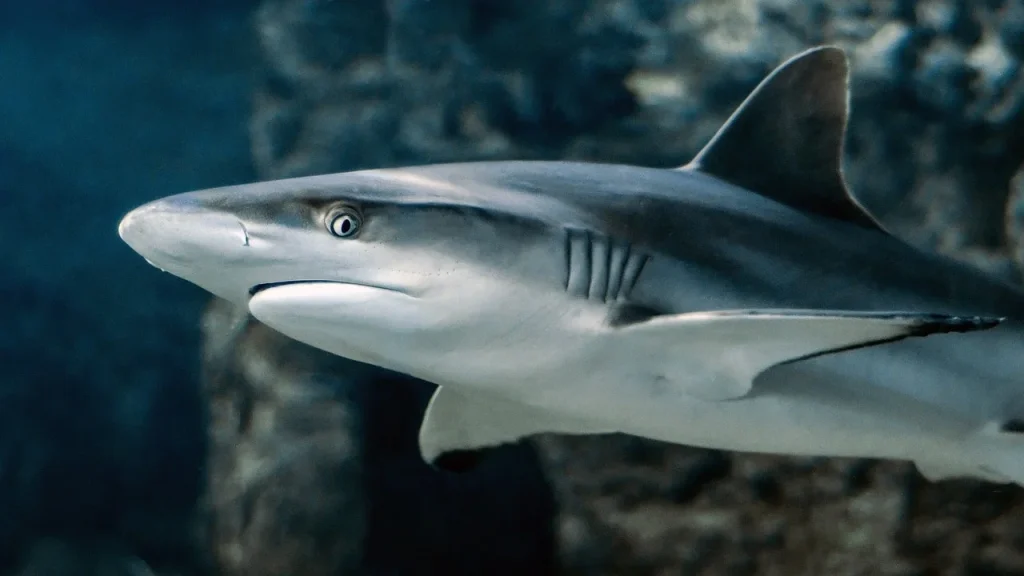What if I told you that sharks could teach us more about the ocean than any other creature? Today, we’re exploring some fun facts about sharks that reveal their secrets and show why they are essential to our oceans.
From the way they hunt to how they navigate vast waters, these facts will not only educate but also inspire awe for them. So, let’s start our journey into the deep with these incredible creatures and discover the wonders they hold.
The only creature that is more feared by sharks than a dolphin is a human.
Paul Watson
Shark Facts
Below you will find my list of facts. Make sure to read carefully, as you’ll find a quiz at the end of the article to test your shark expertise! Don’t disappoint me.
- Some species can glow in the dark due to bioluminescence.
- Their skeletons are made entirely of cartilage, not bone.
- Some are capable of hypercarnivory, feeding exclusively on other marine animals.
- Their liver can constitute up to 30% of their total body mass.
- Many species are ovoviviparous, meaning eggs develop and hatch inside the female’s body.
- Hammerheads have 360-degree vision due to the placement of their eyes.
- Their teeth are continuously replaced throughout their lives.
- Some species can detect a heartbeat from several miles away.
- They can sense a drop of blood in 25 gallons of water.
- Some can dive to depths of over 2,000 meters.
- The dwarf lantern species is smaller than a human hand.
- They use oil in their liver to control buoyancy instead of a swim bladder.
- Some females have developed the ability to reproduce without a mate, a phenomenon known as parthenogenesis.

- Their sense of smell is so refined that they can detect one part per million of blood in seawater.
- Cookiecutter species use suction to attach themselves to large fish or whales and carve out circular pieces of flesh.
- Greenland species can live up to 400 years, making them one of the longest-lived vertebrates on earth.
- They have been around longer than trees.
- Surfers are often mistaken for seals, which leads to attacks.
- Electroreception abilities allow them to detect the electrical fields created by other animals.
- Their skin feels similar to sandpaper due to tiny tooth-like structures called dermal denticles.
- Goblin species have a protruding snout that looks like a pointy shovel.
- They have special mirror-like cells in their eyes to see in dim light.
- Swimming style can help scientists determine the species.
- Their pups are born fully developed and ready to swim.
- The largest species is as long as a bowling lane.
- Nurseries are established in shallow waters to protect the young from predators.
- Some deep-sea species have extendable jaws like science fiction monsters.
- Their migration patterns can span thousands of miles.

- Whale species filter plankton through their gills for sustenance.
- Their gestation periods can last up to two years.
- Tonic immobility is a state of paralysis that occurs when they are flipped upside down.
- Unlike most fish, they do not have an air bladder to help them float.
- They have been the subject of mythology and folklore in many cultures.
- Tagging and tracking have revealed they are highly migratory and can cross entire oceans.
- They have distinct personalities, with some being more aggressive or curious than others.
- Annual migrations follow patterns that coincide with breeding and feeding cycles.
- Their populations are in decline globally, largely due to overfishing and habitat loss.
- Many species have social hierarchies within their groups.

- Some researchers use drones to study them without disturbing their natural behaviors.
- Fluorescent proteins in some species may help them communicate with each other.
- Their role in the ecosystem as top predators is crucial in maintaining the balance of marine life.
- Certain species are capable of asexual reproduction when isolated or in the absence of males.
- Teeth from some species are popular as souvenirs and jewelry, which has contributed to their decline.
- Their speed can exceed 60 kilometers per hour in short bursts.
- Their sense of hearing is highly developed; they can hear prey from far away.
- Some species are known to perform ‘breaching,’ jumping high out of the water as part of feeding or social behavior.
- They often approach the surface at dawn and dusk, which correlates with feeding times.
- Research into their cartilaginous structure has applications in human medicine, especially in understanding cancer and wound healing.
- The isolation of anticoagulants in their bodies could lead to new blood clot treatments for humans.
- Coloration varies widely, from the deep blue of some pelagic species to the vibrant patterns of coral reef dwellers.
Shark Myths

Now that we’ve covered all these interesting facts about sharks, let’s dive into separating truth from myth. It’s time to debunk some common misconceptions and set the record straight.
- Sharks are man-eaters and often attack humans
In reality, they are not naturally inclined to prey on humans. Most shark species prefer their natural prey, like fish or seals. Human attacks are rare and often occur due to mistaken identity, with humans being confused for their usual prey. - Sharks must swim constantly to breathe
While some species need to swim continuously to force water over their gills for oxygen, many sharks are capable of breathing while stationary. They achieve this by actively pumping water over their gills. - All sharks are large and menacing
The perception that all of them are large is incorrect. Out of over 500 species of sharks, most are actually smaller than humans. Some species, like the dwarf lanternshark, are only about eight inches long when fully grown. - Sharks have no predators
They are not at the top of the food chain; larger sharks, orcas, and humans are known to prey on them. Human activities, especially fishing and habitat destruction, pose significant threats to shark populations worldwide. - A shark’s sense of smell is its only strong sense
It is often thought that they rely solely on their sense of smell, but their sensory systems are highly developed. In addition to their acute sense of smell, they also have excellent hearing and a unique sense called electroreception, allowing them to detect electrical fields generated by other living organisms.
Shark Quotes

These magnificent predators have inspired us with their streamlined forms and powerful jaws. Let’s dive into the ocean of quotes and explore what prominent figures have said about these enigmatic creatures.
Sharks are beautiful animals, and if you’re lucky enough to see lots of them, that means you’re in a healthy ocean. You should be afraid if you are in the ocean and don’t see sharks.
Sylvia Earle
Sylvia Earle, a renowned marine biologist, underscores the importance of sharks in marine ecosystems, suggesting that their presence is an indicator of ocean health.
I’m terrified of sharks, but fascinated by them.
Michael Phelps
This quote from Olympic swimmer Michael Phelps captures the common dual feeling of fear and fascination that many people experience when it comes to sharks.
The biggest shark is the fear in your mind.
Harvey Mackay
Harvey Mackay, a businessman and author, uses sharks metaphorically to describe the concept that often our fears are larger and more daunting than the actual threats we face.
Sharks are the lions of the sea. They glamorize the oceanic glory.
Munia Khan
Munia Khan, a poet, pays tribute to the majestic role sharks play in the ocean, comparing them to lions in terms of their regal and vital role in their habitat.
People don’t take trips, trips take people. And if your trip includes seeing a shark, you’re lucky.
John Steinbeck
While not exclusively about sharks, this quote from acclaimed author John Steinbeck suggests that encountering a shark during one’s travels is a unique and fortunate experience, highlighting the memorable impact of such sightings.
Shark FAQ

As we dive deeper into their mysterious world, let’s tackle some frequently asked questions. Read carefully—these details will be crucial for the upcoming quiz!
- Are sharks older than trees?
Yes, they are indeed older than trees! Sharks have been around for about 400 million years, whereas the earliest trees appeared around 350 million years ago. This means sharks were swimming in the oceans long before the first forests took root on land. - Can sharks swim backwards?
No, they cannot swim backwards. Their fins are designed to propel them forward efficiently, and their bodies aren’t flexible enough to move in reverse. If a shark needs to retreat from something, it has to turn around. - Which shark is the most dangerous?
The great white shark is often considered the most dangerous shark to humans, mainly due to its size, power, and feeding behavior. However, it’s worth noting that shark attacks are extremely rare, and sharks generally do not target humans as prey. - Can sharks smell blood?
Yes, they have an incredibly keen sense of smell and can detect blood in the water from miles away. This acute sense helps them locate injured prey but doesn’t mean they’re attracted to human blood specifically. - Are sharks endangered?
Many species are indeed endangered due to overfishing, habitat loss, and the demand for shark fins. Conservation efforts are crucial to protecting these important marine predators and maintaining the balance of ocean ecosystems.
Shark Trivia

Welcome to our fin-tastic shark quiz! Remember, if you don’t get any answers right, you’ll be ‘chumming the waters’ for our next round of shark jokes!
Shark Merch
If you are a true fan of sharks, then you definitely need to check out our merchandise. You can find T-shirts, hoodies, mugs, and tote bags for your favorite designs. Feel free to check out all the other designs in our shop.
Conclusion
To sum up, sharks are not just fascinating subjects for documentaries and movies; they are vital participants in the ocean’s ecosystem.
Their presence ensures the health of marine environments, which in turn affects our own quality of life. So, let’s strive to view sharks with respect and curiosity rather than fear. Till next time, stay curious and explore more. Cheers.


